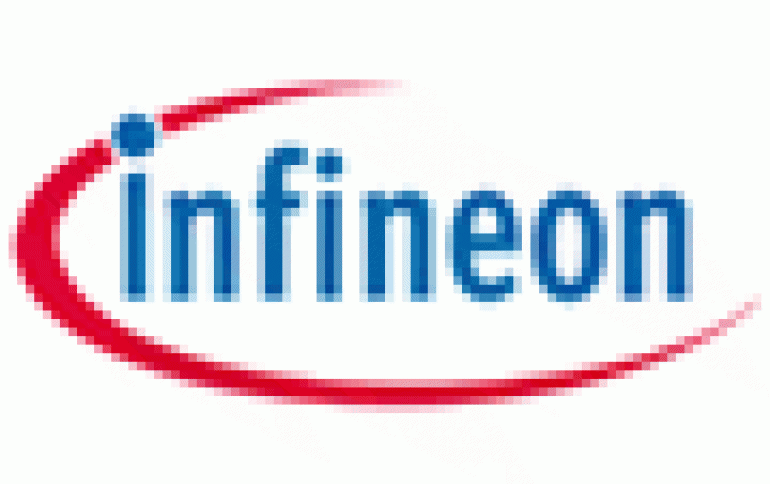
Infineon follows Samsung with DDR3 talks
Infineon Technologies AG said Tuesday at Intel Developer Forum in Taipei, Taiwan, it would sample its DDR3 chips with
clients in about one and a half year. The claim comes days after Samsung Electronics was expected to talk about
DDR3 design considerations at a JEDEX meeting in the U.S.
As reported by IDG News Service, which quotes Jessica Chen, a product marketing engineer for Infineon, the Munich,
Germany-based memory supplier will have DDR3 available for customers to sample around the end of 2006.
Theoretically this may indicate that commercial DDR3 production may begin about a year after, in late 2007.
Infineon began to sample DDR2 in March, 2003, about 16 months before the first actual platforms supporting the memory type Intel's 915P/G and 925X chipsets were introduced commercially. By contrast, Elpida and Samsung Electronics commenced testing the DDR2 in mid-2002, nearly two years before commercial launch.
Samsung Electronics announced in mid-February it had made the world's first 512Mb memory chip which complies to next-generation DDR3 standard and can operate at the speed on 1066MHz. The prototype operates at 1.5V and transfers data at the speed of 1066Mbps. Samsung says DDR3 memory will be made using 80nm process technology; at present the company uses 90nm for DDR and DDR2 SDRAM production.
In addition to micro-architectural advantages DDR2 memory brings over the original DDR memory, such as, On-Die Termination (ODT) as well as larger 4-bit prefetch, additive latency, and enhanced registers, the DDR3 features self-driver calibration and data synchronization.
Samsung quoted market research firm IDC as saying that the first DDR3 DRAMs will be sold in 2006 and that the DDR3 will represent 65% of the entire DRAM market in 2009.
Intel Corp.'s plans included platforms supporting DDR3 memory in 2007, which is likely to catalyze memory makers to arrange commercial manufacturing of DDR3 SDRAM in 2007. Still, some makers may offer DDR3 for non-PC applications, such as networking devices, earlier than Intel proposes a desktop platform with DDR3 support.
Source: xbitlabs.com
Infineon began to sample DDR2 in March, 2003, about 16 months before the first actual platforms supporting the memory type Intel's 915P/G and 925X chipsets were introduced commercially. By contrast, Elpida and Samsung Electronics commenced testing the DDR2 in mid-2002, nearly two years before commercial launch.
Samsung Electronics announced in mid-February it had made the world's first 512Mb memory chip which complies to next-generation DDR3 standard and can operate at the speed on 1066MHz. The prototype operates at 1.5V and transfers data at the speed of 1066Mbps. Samsung says DDR3 memory will be made using 80nm process technology; at present the company uses 90nm for DDR and DDR2 SDRAM production.
In addition to micro-architectural advantages DDR2 memory brings over the original DDR memory, such as, On-Die Termination (ODT) as well as larger 4-bit prefetch, additive latency, and enhanced registers, the DDR3 features self-driver calibration and data synchronization.
Samsung quoted market research firm IDC as saying that the first DDR3 DRAMs will be sold in 2006 and that the DDR3 will represent 65% of the entire DRAM market in 2009.
Intel Corp.'s plans included platforms supporting DDR3 memory in 2007, which is likely to catalyze memory makers to arrange commercial manufacturing of DDR3 SDRAM in 2007. Still, some makers may offer DDR3 for non-PC applications, such as networking devices, earlier than Intel proposes a desktop platform with DDR3 support.
Source: xbitlabs.com



















